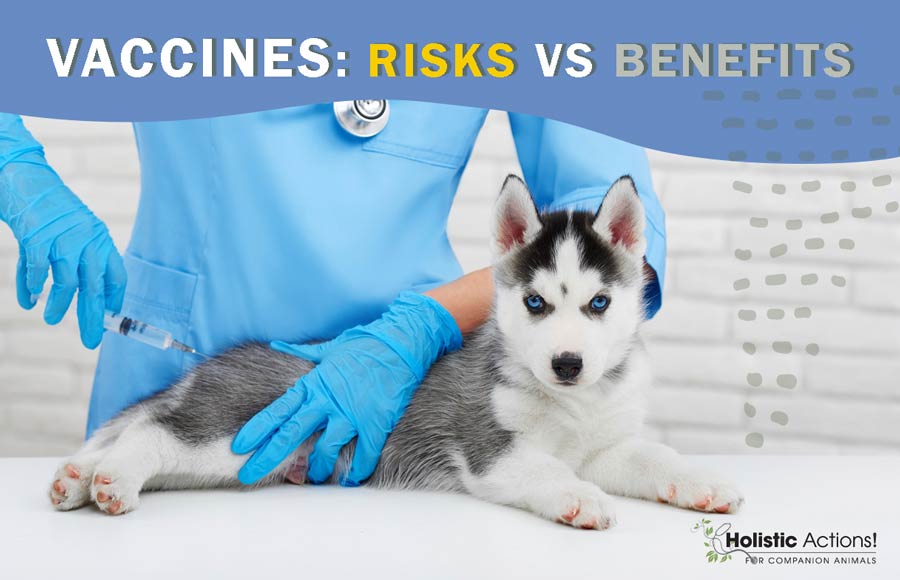
The Benefit of Vaccinating
This article has been adapted from the Holistic Actions! vaccinosis webinar ebook.
If you’d like to be notified the next time we have a webinar about vaccination or when the vaccinosis course is released, please sign up below.
There’s only one benefit from vaccinating. But it’s really big!
Vaccinating can save lives.
We vaccinate to prevent serious infections like parvo, distemper panleukopenia and rabies.
Exposure to these serious infectious diseases varies tremendously. Our kitties that never go outside have a much lower exposure risk than pups that go to agility classes weekly.
In people, the Centers for Disease Control estimates that in the past 20 years, vaccination has prevented 732,000 deaths among children.
The mortality statistics are not as clear for companion animals. However, we do know that vaccinating shelter animals and in the midst of some epidemics can also save lives.
Yet more and more caring pet parents prefer not to vaccinate.
Why is that?
Because there is growing evidence that we are making our companion animals sicker by (over) vaccinating.
Risks from Vaccinating
Adverse effects from vaccines range from immediate and fatal allergies to cancers and immune damage.
One example in people of this well-documented risk is called “ASIA” (Autoimmune Syndrome Induced by Adjuvants).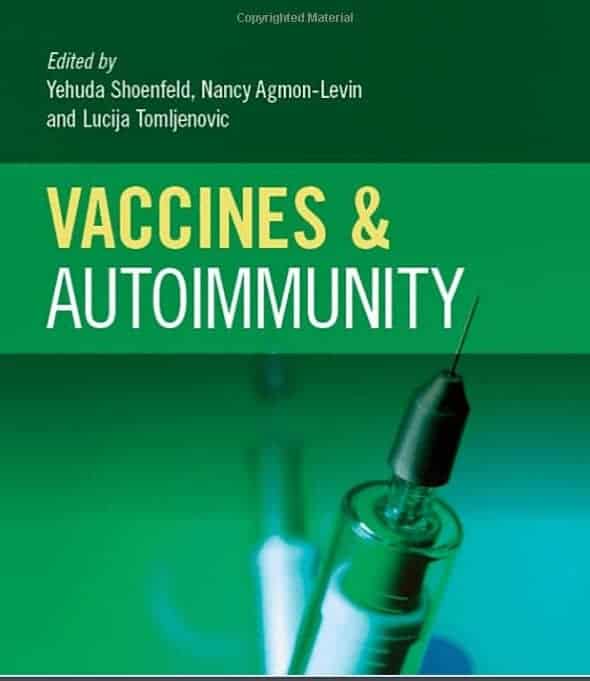
The veterinary literature has many similar immune dis-ease examples. Serious internal imbalances, like anaphylaxis, Autoimmune Hemolytic Anemia (AIHA), Immune-mediated Thrombocytopenia (ITP), thyroiditis, etc.
These reactions are often from toxic ingredients like mercury, aluminum, formaldehyde, genetically modified components, etc.
We inject these toxins because our pet’s “shots” don’t work without them. Yet at the same time we are trying to avoid exposure to toxins.
However it’s impossible to totally avoid the toxins in the vaccines we give our pets.
So do the many known risks from vaccinating outweigh the one potential benefit?
Good question but the answer depends on who you ask. One thing is clear:
Fewer vaccines = less risk.
Even University veterinary schools, AAHA (American Animal Hospital Association), AAFP (American Association of Feline Practitioners), WSAVA (World Small Animal Veterinary Association), etc. have been recommending minimizing vaccinating for years.
These are their “core” vaccination programs which are designed to decrease risk from giving un-needed vaccines.
Only rabies vaccination is mandated by law. The others are optional.
That makes it easier to reduce the risks of vaccinating. Many of these are described in the 866 page National Institute of Medicine’s “Adverse Effects From Vaccines” book.
There’s nothing controversial about any of this. These are well accepted facts.
Fear and the Benefit from the one Required Vaccine

ASIA, anaphylaxis, allergy and cancer may be some of the risks, but where’s the benefit?
In the case of rabies, the benefits are our pets remaining legal and possibly protecting them from a scary and fatal disease.
Other than rabies every 3 years*, there is no legal requirement to vaccinate.
Yet many of us vaccinate much more frequently. There’s one main reason that we do so.
Fear.
Fear of potentially serious and sometimes even fatal diseases.
Fear of the unknown.
What if…?
The good news is that fear of unknown risk can easily be reduced by considering the risk of exposure to these infectious organisms.
That’s pretty easy to determine. Look at your pets’ lifestyles.
Then ask your veterinarian and fellow pet parents whether they know of any recent local cases of parvo, panleukopenia, distemper, etc. And just call your town health department to see if there have been any cases of rabies in your area.
If cases of parvo, flu, rabies, etc. are rampant in your area, you may choose to vaccinate.
How to Reduce Risk from Vaccinating
If you do so, there are safe and effective ways to reduce the risks from the toxins in vaccines.
The most effective way is to look closely at whether your pets are healthy enough to get vaccinated. Click here for an article that gives you another way to reduce the risk. Especially if you need (by law) to vaccinate an unhealthy (internally imbalanced) pet.
However, determining this level of health is not as easy as finding exposure risk.
Fortunately, you can learn this and significantly decrease this risk by closely observing your pet’s symptoms.
Symptoms like the Holistic Actions! BEAM (Behavior, Energy, Appetite, Mood) symptoms and the early warning signs are great clues of any internal imbalance.
If any of these clues are found, then vaccination carries an extra risk. Correct internal imbalances before vaccinating in order to decrease it.
Externally observable and internally measurable symptoms reflect balance and health.

Unhealthy pets should not be vaccinated.
So “follow the symptoms” (they are better than money in this context!)
Vaccine manufacturers ask you not to vaccinate unhealthy pets for a reason. Unhealthy pets are internally imbalanced and much more likely to develop vaccinosis (state of energetic imbalance and mild to life-threatening illness occurring after an animal or person receives a vaccination).
Yet we vaccinate unhealthy pets every day.
Are Vaccinated Pets Healthier?
We assume that we need to vaccinate in order to keep our pets healthy. But is that true?
Part of the problem is our current conventional definition of health. “Health” is defined as the absence of named diseases like “Parvoviral Enteritis” or “Rabies Encephalitis”.
Not the true internal wellness and balance that improves quality of life and reduces risk of vaccinosis.
Yet many of our pets suffer from chronic dis-eases (internal imbalances) as a result of over vaccinating. Which we often do out of fear. Fear of both infection as well as fear of symptoms.
Vaccination and symptom suppression are quick and easy. Anti-biotics, steroids, etc. are very effective for eliminating symptoms. But they do not treat the underlying problem.
In fact there’s documented evidence that doing so can make immune function and internal problems worse! And increase risk of infections and vaccinosis.
There’s also lots of clinical evidence that eliminating symptoms by correcting any underlying imbalance reduces risk. “The proof is in the pudding.”
Many other of the articles and resources you’ll find here discuss the significance of symptoms and how to use them to re-balance your pet. So we won’t be going into that here.
Suffice it to say that symptoms reflect health and balance. You can use them to reduce the risks from vaccinating.
Recognizing and optimizing wellness also increases resistance to infection.
Please avoid automatically giving “Shots in the dark” before you research the risks and benefits of vaccinating.
Your pets will thank you.
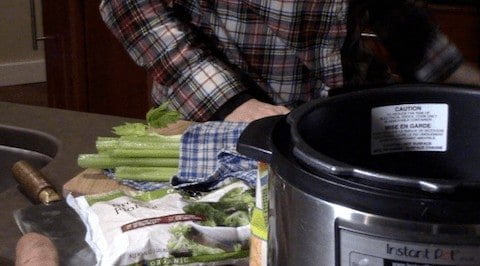
Fresh Food Cooking for Pets Recipes

Is the Food you Feed Helping or Hurting Your Pets?
Food has been used as a safe and effective medicine for thousands of years.
Living food is vital and gives our pets the nutrients and energy they need to survive, thrive, and heal. The freshest foods promote wellness and speed this healing.  Processed pet foods have most of their vitality removed.
Processed pet foods have most of their vitality removed.
The high heat and pressure used during manufacturing destroys most of their living parts and healing properties. These de-vitalized foods then need these essential nutrients added back to them.
Dry and wet dead foods can predispose your pets to nutritional, allergic and autoimmune dis- eases. Even fatal poisoning from toxins in the ingredients.
Most of our pets love food and live to eat. They have to eat whatever we give them and rely on us to feed them well and deserve better than this.
Fresh, living (vital) food is ideal and what their bodies crave. If you feed kibble or canned foods try mixing in some fresh food with their next meal and see what gets eaten first.
Real food is known to help resolve diabetes and obesity, mouth and dental dis-eases, skin and ear problems, inflammatory bowel and heart dis-eases etc.
The freshness of the food we feed our companion animals directly influences length and quality of their lives.
Help your pets today. Feed Fresh Food.
Here is the food vitality scale. Where does your pet food fall on it?
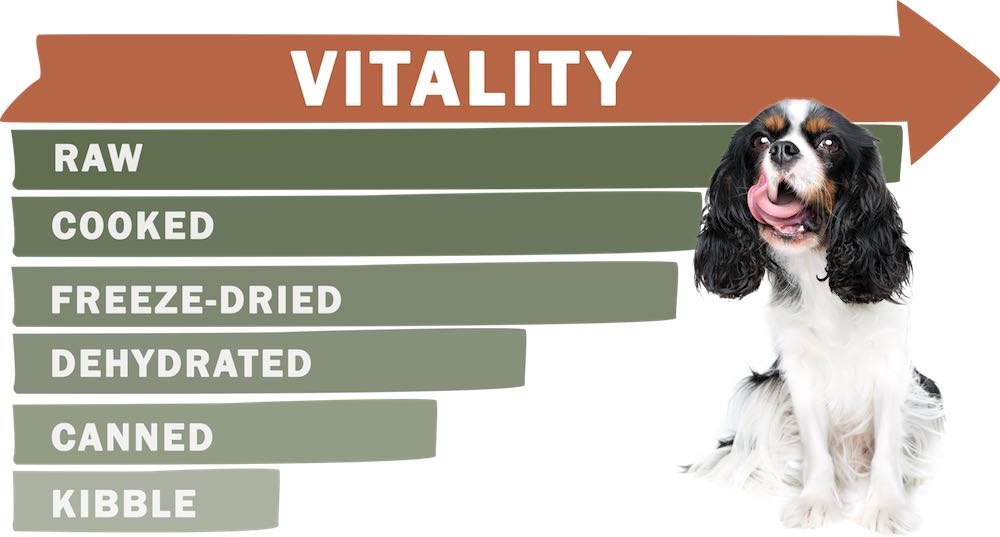

Practicing Proactive Prevention and Treatment to Best Help Our Pets (Brain Tumor Case)
 Sue and Bear’s story can help you decide what to do.
Sue and Bear’s story can help you decide what to do.
Bear is a playful eight year young Bulldog. All of a sudden he started having seizures.
His worried guardian brought him to a neurologist who ran diagnostic tests that showed a large brain tumor.
Why did this happen?
Sue had tried to do everything right. She fed local raw meats in variety, minimized vaccines and drugs, didn’t use any flea or tick poisons, etc.
Important Questions – HMDM Method
What happened and what can Sue do now?
Her HMDM (Holistic Medical Decision Making) STEP 1 goal is to get Bear as healthy, in any way, for him to have the best quality of life for as long as possible.
That brought Sue to HMDM STEP 2. Investigate the problem and learn all of the possible treatments.
Her neurologist laid out the current conventional options. These were steroids and other chemotherapy, surgery and Cyberknife (radiation). None of them would save Bear’s life, but they might buy him a few months.
This didn’t seem like much time. Especially considering all of the side-effects and quality of life lowering limitations of each.
So Sue quickly (she didn’t have much time to help Bear) moved on in her research. And learned more about everything from special diets, nutritional supplements, acupuncture, etc. that were claimed to help seriously ill dogs.
Bear had already tried some of these holistic treatments prior to skin tumors had been removed. None of them seemed suited to this dire situation.
A week went by and Bear was getting worse. It was time to move on to HMDM STEP 3.
The Answer and Holistic Action!
During Sue’s research, Bear’s guardian learned more about the holistic and homeopathic perspective. One that was not currently accepted conventionally, but which could help.
The brain tumor might have resulted from a subtle internal energetic imbalance.
The idea being that the imbalance first resulted in seemingly minor problems like his skin tumors. Even though they were removed, the underlying cause persisted.
It therefore made sense to address this underlying problem directly. Even if most US veterinarians said that it was not “real”. As Bear’s guardian learned, this was not the case elsewhere.
She therefore chose to find a veterinarian who could treat this way and work alongside her neurologist. Her veterinary team was complemented by holistic practitioners of massage, Reiki, flower essences and other gently supportive methods. Everything possible to give Bear the best possible life.
Fine-tuning the Vital Force
Sue was then introduced to the homeopathic concept of regaining health by listening very closely to Bear’s body. Apparently it had been “talking” to her all along. Through the externally visible and internally measurable symptoms.
They could then be used to treat him. Veterinary and MD homeopaths had hundreds of years of successful clinical outcomes. Even in critical cases and during otherwise fatal epidemics.
Treating and monitoring Bear using this approach required commitment on Sue’s part. She started keeping a daily journal of symptoms and responses to treatment.
In order to best use this seemingly unrelated information she touched base with her veterinary homeopath every few days.
That way, she was best able to help. By frequently evaluating symptom changes, both the underlying energetic balance and any side-effects from conventional treatments could be reduced.
At this time, Bear’s story is not finished, but he continues to be a happy boy.
You can also learn to help your pets as Sue did. The free resources on this site will get you started. If you’d like to go even further, Holistic Actions! Academy is here to help.
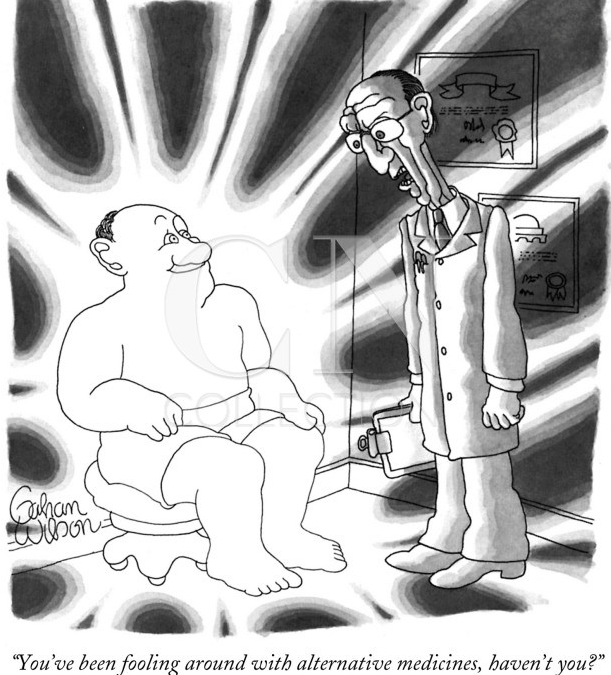
Heal Your Pet With a Hug
 While researching the connection between wellness and vitality, I came across an article with the intriguing title of:
While researching the connection between wellness and vitality, I came across an article with the intriguing title of:
“Therapeutic Touch Affects DNA Synthesis and Mineralization of Human Osteoblasts in Culture”
This is not some woo-woo research. It’s from a conventional medical center published in a mainstream journal.
The article shows positive, statistically-significant, effects on living cells under laboratory conditions. Osteosarcoma (bone cancer cells) were influenced just by holding them.
Wow! More food for thought.
This is even more evidence of a life-giving energy (“vitality”). And it can be transferred through touch.
There’s already plenty of research showing the many positive effects from healing touch. Wound healing, behavior problems, carpal tunnel syndrome (in people) etc.
You can incorporate this in your pet’s wellness program today.
Hug, pet and “love up” your companion animal’s today.
Dr. Jeff
